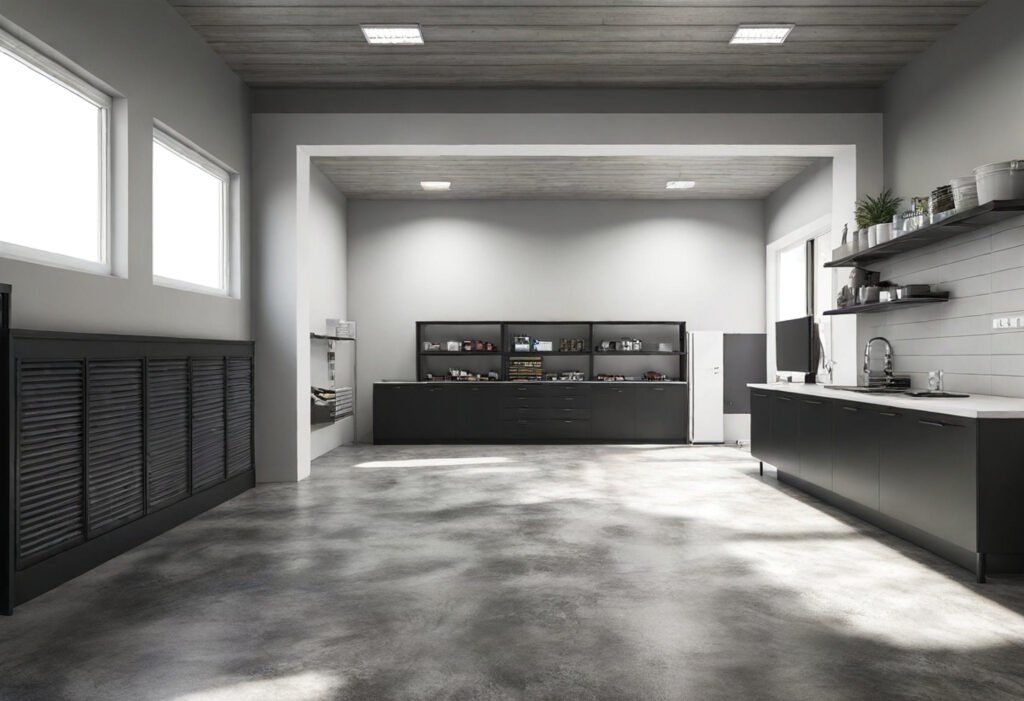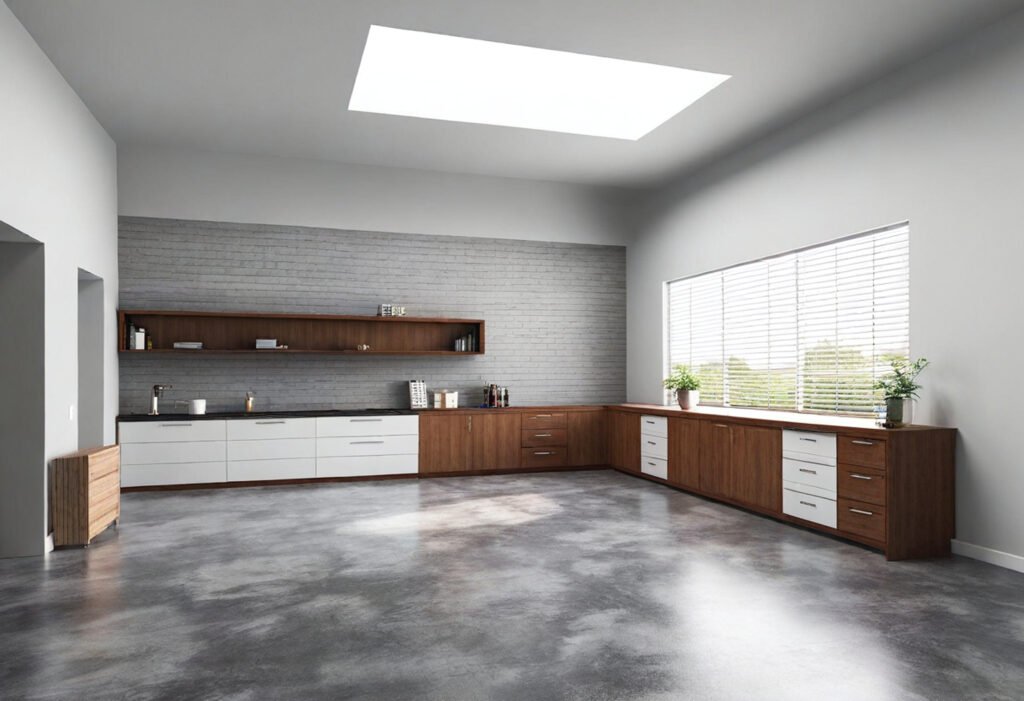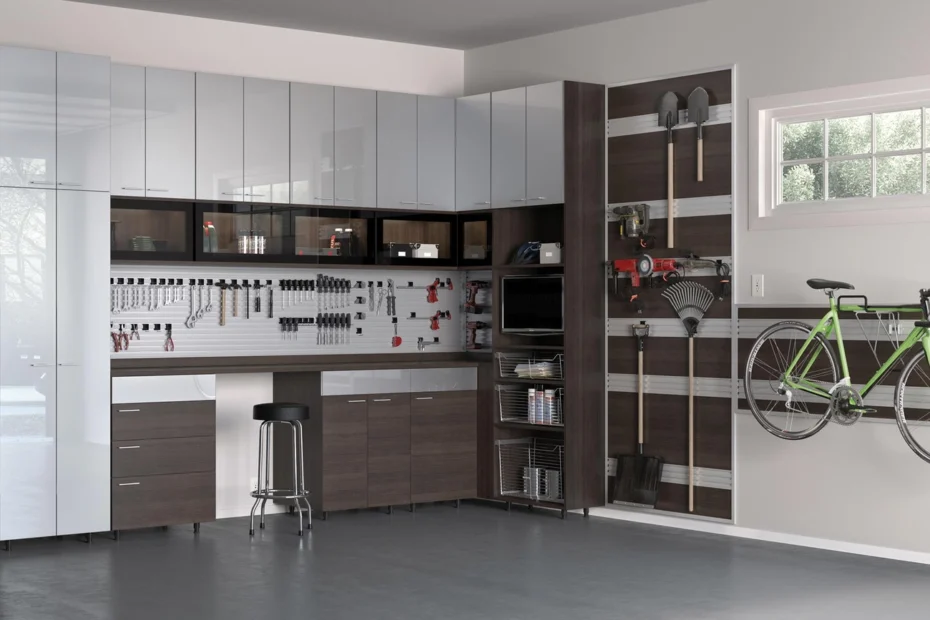My research into garage cabinet installation cost left me shocked—prices ranged from $150 to a staggering $5,400 for custom solutions. My trip to get my messy garage in order turned out more challenging than I predicted.
The numbers I found showed that homeowners spend about $1,335 on average, but costs swing wildly based on size, materials, and features. A standard cabinet installation runs between $500 and $2,500 per unit. These figures tell just part of the story. Your garage’s size can substantially change the total cost—a small one-car garage needs $500 to $4,000 for cabinetry, while a medium two-car space might set you back $2,000 to $5,000.
My garage makeover taught me crucial lessons about choosing materials, dealing with unexpected costs, and tackling installation hurdles that websites never mentioned. This piece shares my real-life experience with custom garage cabinets, breaks down the actual costs, and gives practical advice I wish I’d known from the start.
Why I Chose Custom Garage Cabinets
My garage had turned into a nightmare. One day, while standing there, I couldn’t take the chaos anymore. Looking for anything became a wild hunt through mountains of tools, sports gear, and boxes I promised myself I’d sort “someday.” The space felt more like a dumping zone than a functional space.
My garage before the upgrade
The mess was overwhelming. Bikes lay scattered on the ground. Yard equipment spread everywhere. Mysterious boxes formed wobbly towers that threatened to fall. The clutter created real safety hazards. Tools scattered around and items stored randomly on the garage floor were accidents ready to happen. Simple tasks turned into lengthy searches because I couldn’t find what I needed.
Why off-the-shelf options didn’t work
Big-box store cabinets seemed like the obvious solution at first. All the same, these pre-made options had several drawbacks.
The simple one-size-fits-all approach failed to meet my storage needs. Standard cabinets came with size limitations that wasted precious space. On top of that, the quality was disappointing. Many units were too flimsy for garage conditions and used thin materials that couldn’t support heavy tools or handle temperature changes.
The biggest issue was that these ready-made solutions couldn’t adapt to my garage’s layout. My space had odd corners and unique features that demanded something custom-built.
What I wanted from a custom solution
My chaotic garage needed to become an organized, functional part of my home. Custom cabinets offered benefits that made them worth the investment:
- Perfect fit: Custom units use every inch of space efficiently. They can improve storage efficiency by 20% compared to standard options.
- Superior materials: Professional-grade cabinets use thicker materials. Their 3/4-inch vertical panels are 25% stronger than the industry standard.
- Specialized features: The units include adjustable shelves, soft-close drawers, and built-in lighting that make everything easy to reach.
- Climate considerations: Raised cabinet positioning protects against potential flood damage.
A well-designed garage storage system can free up to 75% of floor space. This extra room allows space for vehicles, work areas, or hobby stations. The frustration of my messy garage made custom cabinets the logical choice, even with their higher upfront cost.
Breaking Down the Real Costs

I got several quotes for my garage project and couldn’t believe how much the prices varied. Here’s what I learned about the actual costs of garage cabinets from my experience.
Cabinet materials and their price ranges
The materials you choose will affect both how long they last and what you’ll pay. My garage needed cabinets that could handle changing temperatures since it’s climate-controlled.
- Wood cabinets: Classic and sturdy options like maple and oak cost between $150 and $350 per linear foot.
- Metal cabinets: Powder-coated steel gives you the most durability at $180 to $400 per linear foot. Premium metal systems can reach $2,400 per linear foot.
- Melamine surfaces: These economical options cost $100 to $200 per linear foot.
- Laminate options: These versatile and stylish choices run $130 to $250 per linear foot. Basic laminate costs about $15 per square foot.
Labor and installation expenses
I wanted everything to fit perfectly, so I went with professional installation. Standard installation usually costs $60 to $80 per linear foot. Complex jobs that need custom cuts or special mounting solutions cost $80 to $120 per linear foot.
Labor costs for a standard two-car garage like mine usually range from $500 to $1,500. Labor makes up about 75% of the total installation costs.
Add-ons and hidden costs I didn’t expect
The basic cabinets were just the start. Here are some extras that surprised me:
- Electrical modifications: New outlets for integrated lighting added $200 to $500.
- Specialty storage: Each section of overhead racks costs $200 to $500.
- Lighting and power: LED lighting and charging stations added $150 to $400 per cabinet section.
- Climate protection: Each section needed ventilation systems for moisture resistance at $75 to $200.
How much do garage cabinets cost overall?
The final price depends on your garage size. A small one-car garage costs between $500 and $4,000. Two-car garages typically need $2,000 to $5,000. Three-car garages might run from $2,500 to $10,000.
Different cabinet providers have very different prices. My research showed quotes from $2,680 at Cabinets Plus to $6,139 from California Closets for similar setups. I picked a mid-range option that gave me good quality without breaking the bank.
Most homeowners spend between $1,500 and $3,000 total for custom solutions with quality materials, installation, and some extras. This matched what I ended up paying for my project.
The Installation Experience: What Surprised Me
Choosing between DIY and professional installation became my first big challenge after picking my cabinets.
DIY vs hiring a pro: what I picked and why
I ended up choosing professional installation for my garage cabinets. DIY installation could have saved considerable labor costs, but my garage’s uneven floor and complex layout made professional expertise worth the investment. Professionals also carry insurance that protects them from liability if accidents happen. My heavy cabinets needed proper anchoring into wall studs—not hanging by a thread—and this peace of mind was a great way to get.
Timeline and unexpected delays
Installation seemed like it would be quick, but reality proved different. The actual installation took only 2-3 days, but the whole ordeal from ordering to completion stretched nearly 8 weeks. Several things affected this timeline: cabinet material availability, customization complexity, and scheduling conflicts.
Communication gaps turned out to be the most frustrating part. My cabinet provider stopped answering calls due to family health issues, which pushed my timeline back by weeks without any warning.
What I’d do differently next time
Clear communication expectations need to be set from the start. Pre-built cabinets would minimize on-site installation time. Protecting my newly finished garage floor was crucial—something I luckily remembered just in time. High-quality hardware, including a slow-close hinge, would prevent door slammers from damaging my investment.
8 Tips I Wish I Knew Before Installing

My garage cabinet installation taught me some great lessons that would have helped me when I started. Here’s what you should know before you begin your project:
1. Measure everything twice
Start by sketching your garage layout and marking all windows, doors, and car parking spaces to get the best cabinet placement. This simple step will help you avoid mistakes that can get pricey and give you a design that fits your garage’s dimensions perfectly.
2. Don’t underestimate installation time
Each section of the cabinet takes about 1-4 hours to install, longer if you’re new to this. You’ll need another person to help—the work becomes safer and turns out better with an extra pair of hands.
3. Choose materials based on climate
Your garage deals with temperature changes and moisture differently than inside your home. Pick melamine or laminate-coated MDF for hot, humid areas. Stainless steel or marine-grade plywood works best in coastal locations.
4. Plan for future storage needs
Think ahead when you design. Your storage needs might grow with new hobbies, equipment, or family members. Adjustable shelves and modular designs will adapt as your needs change.
5. Budget for more than just cabinets
The costs go beyond the cabinets themselves. Set money aside for things like tool rentals and material adjustments. A professional will charge about $100-$300 to install each cabinet.
6. Think about lighting and access
Good lighting makes a huge difference—88% of people renovating in 2024 put functionality first. Try organizing your space into zones for different uses, like work areas and storage.
7. Use wall space smartly
Tools and small items find a home easily on pegboards, which won’t break the bank. Slatwall systems are great for hanging everything from bikes to sports gear right on your walls.
8. Get multiple quotes
Different providers charge very different prices. Take time to gather several estimates—you might be surprised by the price differences for similar specifications.
Conclusion
My garage was a mess, and turning it into a working space was harder than I first thought. All the same, getting custom garage cabinets was worth every penny. Now my garage feels like part of my home instead of a stressful dump.
Custom cabinets beat store-bought options hands down, especially when you have odd spaces to fill. They use better materials that can handle garage conditions and come with features that match your needs. Prices can range widely, from $500 for simple setups to $10,000 for premium three-car garage systems. Most people spend between $1,500 and $3,000 for good custom solutions.
Your choice of materials will affect both how long they last and what you’ll pay. Wood looks classic, metal stands up best, and melamine and laminate work well for tighter budgets. I ended up going with a professional installation. It cost more but gave me peace of mind about proper mounting and finish quality.
The project’s timing caught me off guard. While installation took just days, the whole ordeal stretched to eight weeks because of delays in orders and communication problems. This taught me a lot about planning and setting the right expectations.
My eight tips are the foundations of what I learned through trial and error. Success comes from measuring carefully, setting realistic deadlines, choosing materials that suit your climate, planning for future needs, detailed budgeting, smart lighting choices, using wall space well, and shopping around thoroughly.
Of course, custom garage cabinets are a big investment. But the extra floor space, improved organization, and less frustration make it worth the money. My garage has changed from a messy catch-all to a useful space that adds value to my home. Looking back, even with unexpected challenges and costs, I’d make the same choice—maybe just with better planning from the start.
